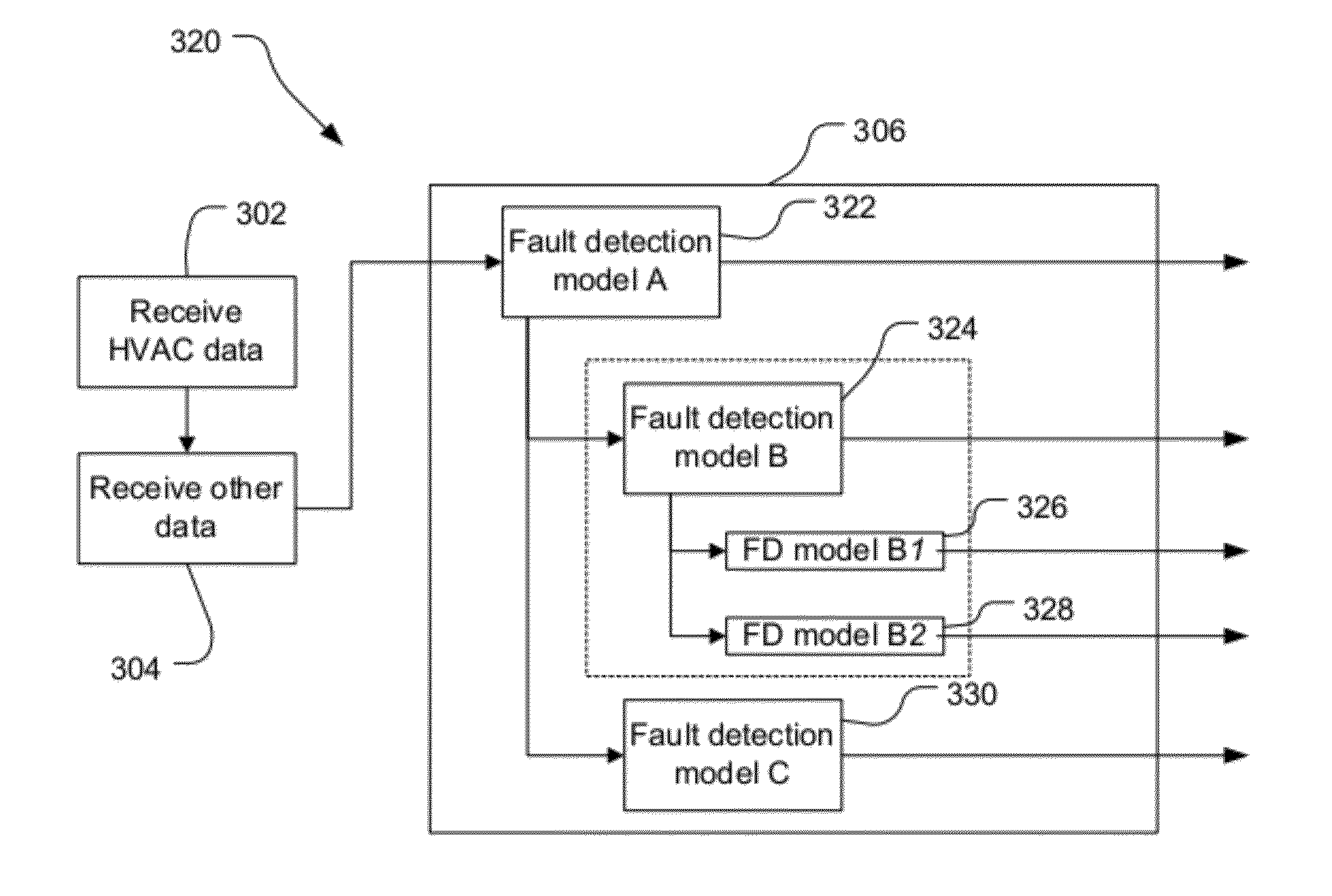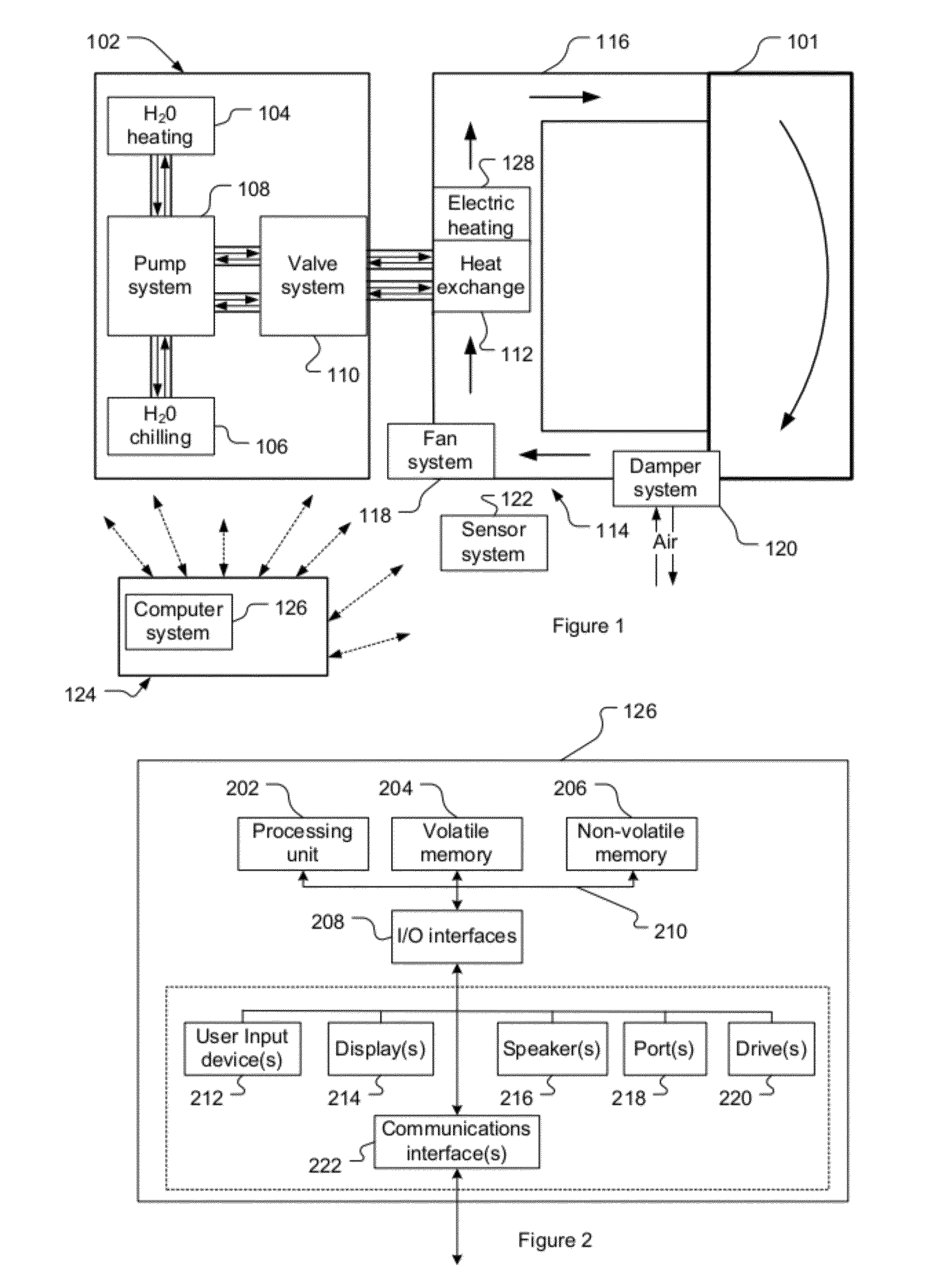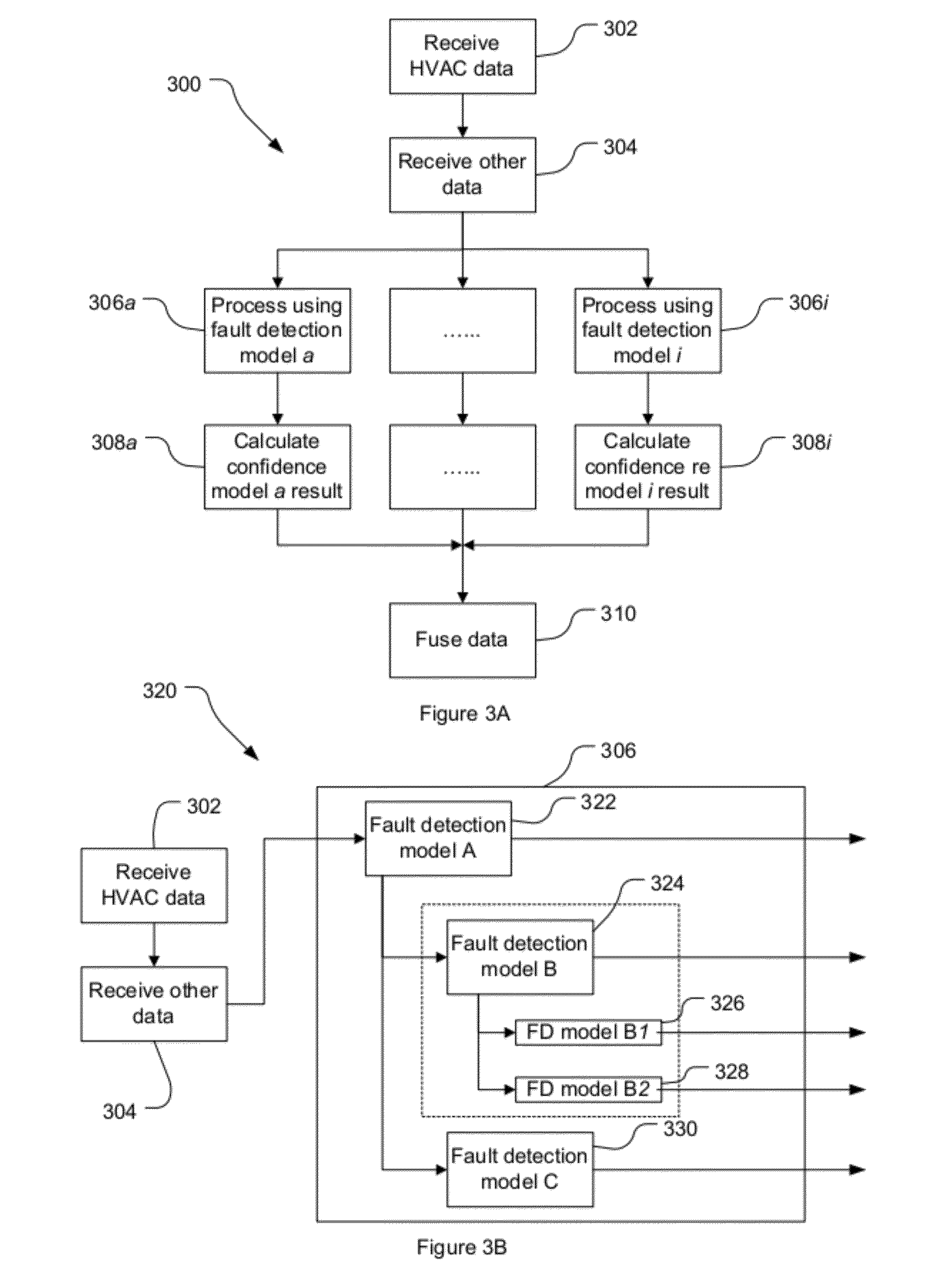System and method for the detection of faults in a multi-variable system utilizing both a model for normal operation and a model for faulty operation
a multi-variable system and fault detection technology, applied in the field of systems and methods for detecting and/or diagnosing faults in multi-variable systems, can solve problems such as mechanical failures, control problems, sensor failures/errors, etc., and achieve the effect of improving the clustering of multiple search results
- Summary
- Abstract
- Description
- Claims
- Application Information
AI Technical Summary
Benefits of technology
Problems solved by technology
Method used
Image
Examples
Embodiment Construction
[0079]Broadly speaking, the present invention relates to systems and methods for detecting faults in a multi-variable system. In order to illustrate the features of the invention, examples of the proposed fault detection system and method will be described in relation to HVAC systems. It is to be understood, however, that systems and processes according to invention may be used to detect faults in other multi-variable systems.
[0080]The system and method of the invention will typically be performed by a computing device, as discussed below, which receives data from various sensors / components of the system and / or external data sources, processes that data, and reports on the likelihood that the system is operating with one or more fault conditions. The computing device may, for example, be (or form part of) a broader building management system (BMS). Alternatively, the system may be a stand alone device.
[0081]The output of the fault detection system / process can then be used by diagnos...
PUM
 Login to View More
Login to View More Abstract
Description
Claims
Application Information
 Login to View More
Login to View More - R&D
- Intellectual Property
- Life Sciences
- Materials
- Tech Scout
- Unparalleled Data Quality
- Higher Quality Content
- 60% Fewer Hallucinations
Browse by: Latest US Patents, China's latest patents, Technical Efficacy Thesaurus, Application Domain, Technology Topic, Popular Technical Reports.
© 2025 PatSnap. All rights reserved.Legal|Privacy policy|Modern Slavery Act Transparency Statement|Sitemap|About US| Contact US: help@patsnap.com



